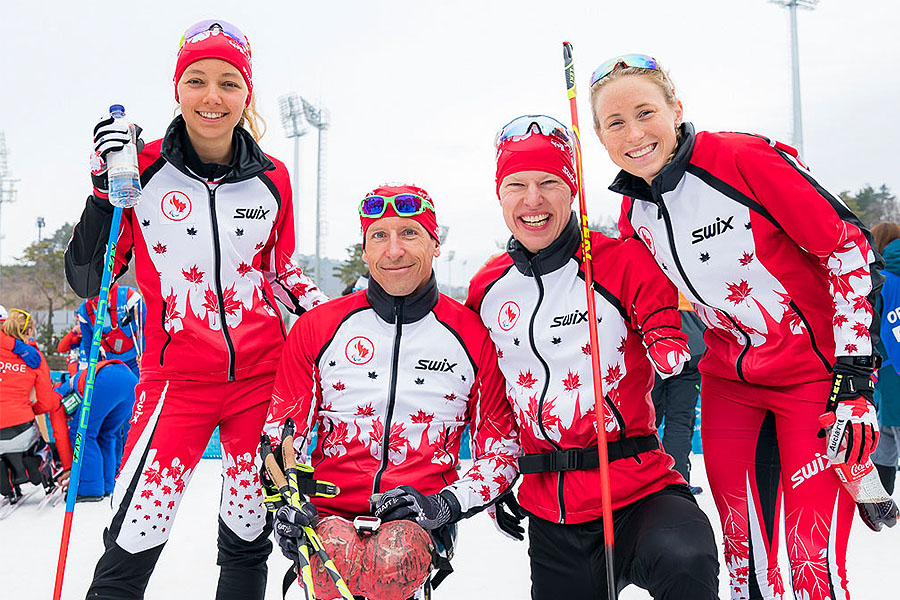
Over the next three weeks, we will look back at some of the Canadian Sport Institute Calgary’s favourite moments of 2018. Today, we reflect on a moment of the Paralympic Games that led to a bronze medal but that exemplifies the spirit coach Robin McKeever instigated with his team and that played an important role in their 16 Paralympic medal haul in PyeongChang.
2018 The Year That Was: Para-Nordic Passion
Going into the last lap of the Para-Nordic 12.5km individual biathlon race at the 2018 Paralympics in PyeongChang, Emily Young knew that she would be out of the medals. With some misses on the range, a few minutes would be added to her final time as a penalty. But her teammate, Brittany Hudak, had shot clear and was in reach of the podium.
Serendipitously, the two skiers were on the final lap at the same time, in the same place on the course. Young took the lead and charged for the finish line, urging Hudak to stay with her and cheering her on as they raced. The pace Young sustained and the encouragement she offered in those final strides helped Hudak to win a bronze medal.
Witnessing this display of teamwork from the sidelines was CSI Calgary Sport Physiologist Jess Kryski. “The timing just worked out for them,” she marvels. “To see that level of sportsmanship was really amazing, especially in an individual sport.”
Kryski has worked with the Para-Nordic team as the team’s Sport Physiolgist since 2015. She has helped head coach Robin McKeever build a world-class team that extends beyond phenom and Paralympic legend Brian McKeever as several new athletes were recruited into the program in 2015.
“The trajectory was quite amazing for those athletes,” says Kryski, referring to skiers such as Collin Cameron, Natalie Wilkie, Mark Arendz, McKeever, Young and Hudak, all of whom medalled in PyeongChang.
The growth of the team in size and calibre led to a massive medal haul at the 2018 Paralympics, where the team won an astounding 16 medals. For such a small team, it was a fantastic accomplishment.
Kryski says that one of the key factors contributing to the success of the team was the level of communication and contact time that the athletes had with the entire support team, especially considering that the team is not centralized.
“Robin did a very good job bringing everyone together for numerous weeks throughout the year,” she says. It helped to ensure that the athletes and support staff forged strong relationships and developed a lot of trust.
Those kinds of relationships and degree of trust are partly what helped Hudak and Young work so well together at a point in a race that often sees athletes fall apart – the gruelling final push.
With Brian McKeever remaining at the helm of this powerhouse team, and rising superstar Mark Arendz blazing new trails, it is clear that the magic of the 2018 Paralympic Games is poised to continue through the next quadrennial and beyond.
Canadian Sport Institute Calgary: @csicalgary
Written by Kristina Groves: @kngrover
Photo by: Dave Holland @csicalgaryphoto
06/12/18
